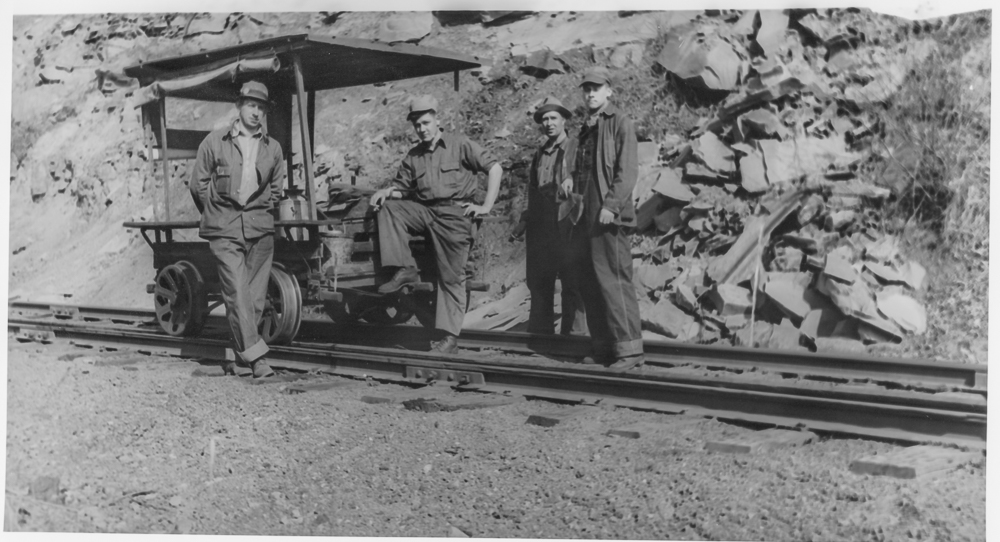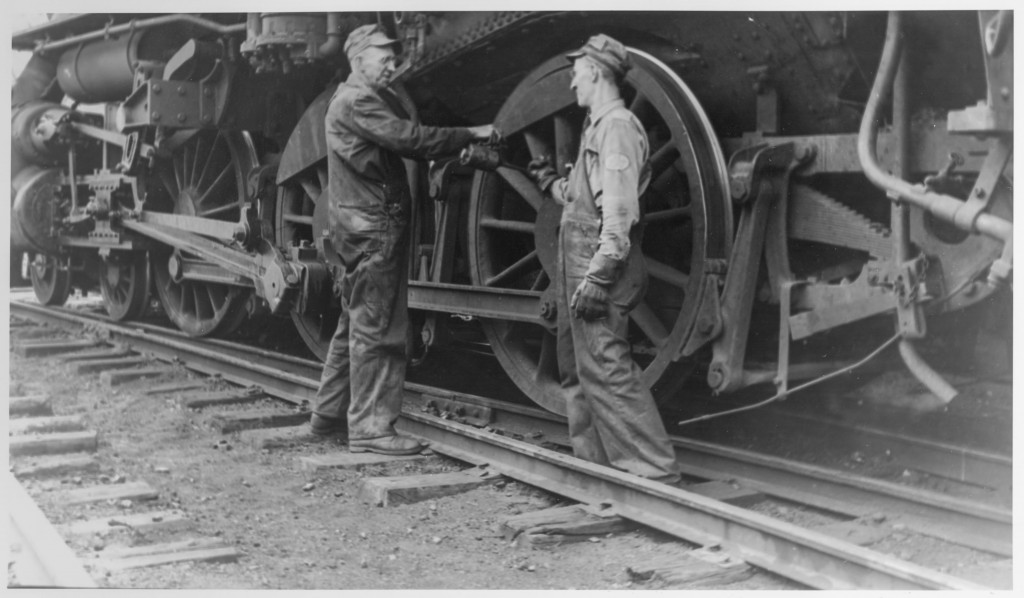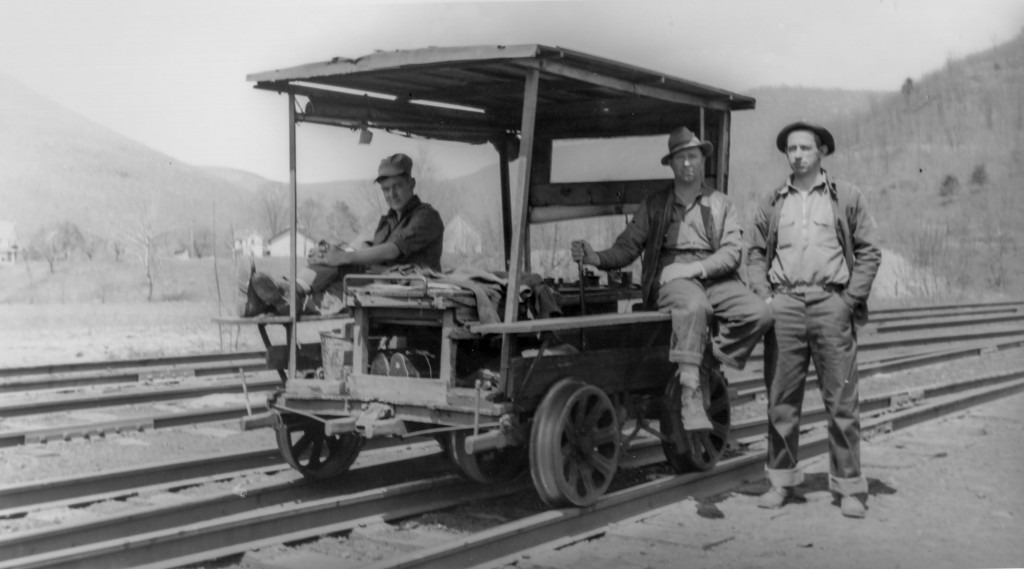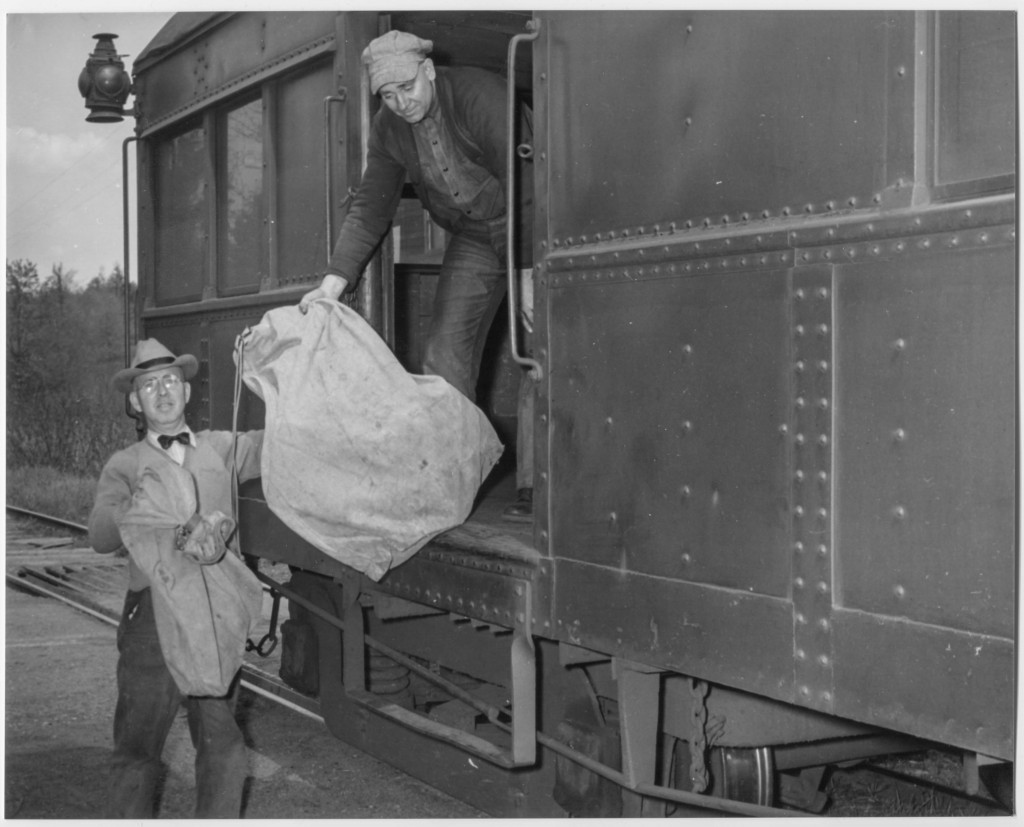Talky Tuesday #28
S&NY engineer Eli Chilson converses with fireman H.G. McQuay while performing the never-ending task of keeping a steam locomotive properly lubricated in last week’s “WW #56”. The process of “oiling around” was the under the purview of the engineer; while the fireman tended to the fire, coal and water levels in the tender, and tried to keep the cab and seat boxes as clean and organized as possible given the incredibly dirty environment of an operating steam engine. Placing oil in the journals of the driving wheels deep in the locomotive frame required the use of a special long-spouted oil can, as seen here. These cans are now sought-after collectors items, as reminders of a by-gone age.
Talky Tuesday #27
No fancy sanding towers at Marsh Hill in last week’s “WW 55”. Labor was cheap and machines were expensive back then. Sand domes on the locomotives were filled by hand, one bucket at a time. Wonder how long it took?
Talky Tuesday #26
I am unsure of the identity of the men in last week’s “WW #54”. Also, I am not sure whether the fellows are member of a train crew, or section crew. I do believe the location is Towanda, though, given the river and mountain in the background. As before, if any readers can help with identifying these guys, I would appreciate it.
Talky Tuesday #25
S&NY section crew and motorized section car are the subject of last week’s “WW #53”. Based on the number of tracks and the background hills, I would surmise this shot was taken at Marsh Hill. I am unsure of the identities of the men in the photo, and any reader’s help would be appreciated.
Talky Tuesday #19
The mail must go through! Last week’s “WW #47” illustrates on of the reasons the S&NY was able to weather the Great Depression. In the era before interstate highways, UPS, television, and the internet, one of the few ways people and businesses could communicate long-distance was via the U.S. Mail. The funds from mail-hauling contracts with the U.S. government was often the only thing keeping many otherwise unprofitable passenger trains and shortlines afloat during the Depression and WWII, at least until trucks began to take over the business in the 1950’s.
Here mailbags are exchanged at a station stop somewhere along the S&NY, possibly Wheelerville.
Talky Tuesday #17
Last week’s “WW #45” is from the collection of Steve Hall, and shows SNY fireman H.G. McQuay, John J. Kilmer (section foreman?), and engineer Eli Chilson clowning a bit for the camera. Engine #114 forms the backdrop.




Recent Comments